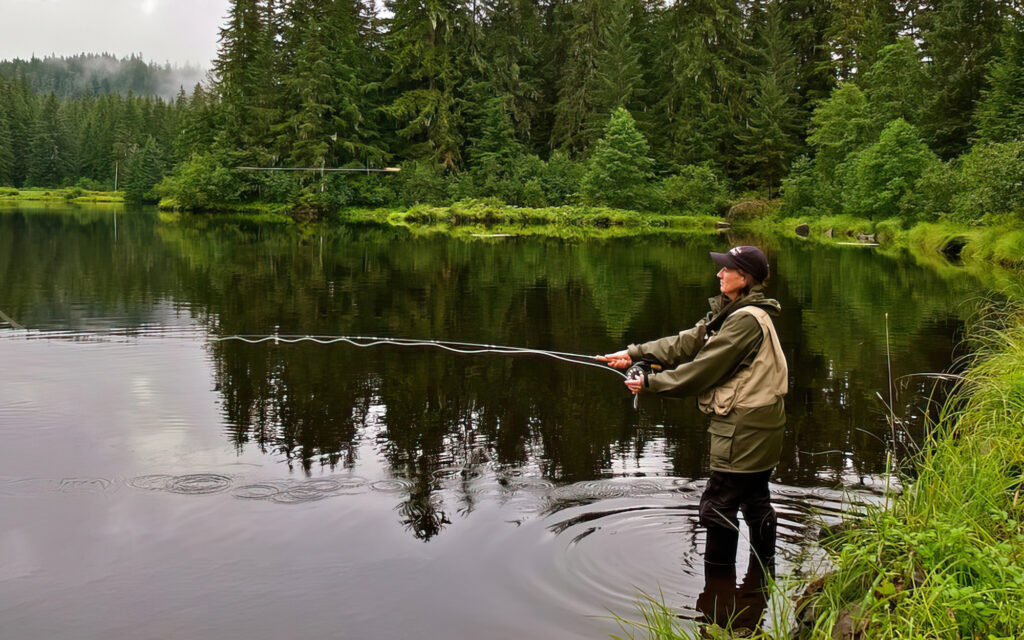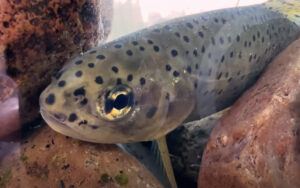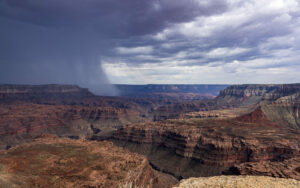Summer and fall are prime times for getting outdoors across the U.S. According to an annual survey produced by the outdoor industry, 55% of Americans age 6 and up participated in some kind of outdoor recreation in 2022, and that number is on the rise.
However, the activities they choose are shifting. Over the past century, participation has declined in some activities, such as hunting, and increased in others, like bird-watching.
These shifts reflect many factors, including demographic trends and urbanization. But outdoor activities also have their own cultures, which can powerfully affect how participants think about nature.
As scholars who think about organizational theory, management and entrepreneurship, we are interested in understanding effective ways to promote social change. In a recent study, we analyzed the work of the nonprofit group Trout Unlimited, which centers on protecting rivers and streams across the U.S. that harbor wild and native trout and salmon.
We found that since its founding in 1959, Trout Unlimited has pursued a unique type of social change. Historically, people fished to obtain food – but Trout Unlimited has reframed the sport as a vehicle for environmental conservation. It did this by gradually shifting members from catch and keep practices to catch and release, with fish carefully returned to the water. In our view, this strategy offers a powerful example of energizing social change through care, rather than disruptive strategies that emphasize power, anger and fearmongering.
A sport that inspires devotion
Fishing is very popular in the U.S.: As of 2016, more then 35 million Americans fished, mainly in fresh water. Trout Unlimited was founded in 1959 on the banks of Michigan’s Au Sable River with the aim of building a strong conservation ethic among anglers. Today, the group has more than 300,000 members spanning hundreds of local chapters across the U.S.
Many Trout Unlimited members prefer fly fishing, a technique that uses a rod, reel, specialized weighted fishing line and artificial flies designed to mimic trout’s natural food sources. Trout generally thrive in beautiful, fast-flowing, cold-water streams and rivers; to catch them, fly fishers repeatedly cast a line so that their lure moves like a flying insect landing and floating on the water. It’s a sport that combines deep knowledge of a specific location with time-honored techniques.
In the 1653 classic “The Compleat Angler,” English writer Izaak Walton called fly fishing “an art worthy the knowledge and practice of a wise man.” Norman Maclean’s 1976 book “A River Runs Through It,” which recounts the author’s childhood experiences fishing Montana’s Big Blackfoot River, declares, “In our family, there was no clear line between religion and fly fishing.” Changing the practices of devoted anglers is no small feat.
Fly-fishing and stewardship
The first stage of change that Trout Unlimited pursued in its interactions with members was what we call mending – fixing aspects of a practice that are seen as problematic or damaging. For Trout Unlimited, that meant subtly removing harvesting practice from images of fly fishing, while simultaneously reinforcing anglers’ deep connections to rivers.
This reframing began in the late 1960s and continues today, as we learned by analyzing cover images and editorials from “Trout,” the organization’s member magazine, and interviewing staffers at Trout Unlimited and others throughout the fly fishing industry. Editors of “Trout” scrubbed away images of harvesting gear, such as creels, stringers and spears. Instead, they featured photos of trout being safely released and of caught fish remaining underwater in their environment.
These changes did not directly speak to or challenge anglers’ practices. Instead, they worked more subtly. “Trout” editors also began to describe old harvesting artifacts like creels as “something of a curio” and “relics of the past.”
In another editorial shift, the magazine increasingly featured images of vast river landscapes rather than close-up photos of people fishing. This approach elevated the experience of being in nature above that of catching fish.
Editors included poetry and sermonettes in the magazine that modeled normative values of conservation and catch and release practices. Here’s one example:
Carefully I reach out, and lift him in my net,
But I make sure not to touch him, until my hands are wet.
For not doing so would damage him, and that would not be right,
For this indeed I owe him, for such a noble fight.
As gently as I can, I remove the hook and set him free …
Using words and images, the magazine sought to trigger positive emotions and a sense of deep connection and love for trout.
Caring for fishing grounds
As Trout Unlimited built momentum in the 1960s and ’70s, the organization made river and stream restoration a major priority. This period marked the birth of the modern environmental movement. Americans were recognizing that industrial development was harming precious natural resources, including fishing grounds.
Logging had ravaged wetlands and stream banks along river corridors. Dam construction, particularly in Western states, was blocking fish passage, preventing trout and salmon from swimming upstream to their spawning grounds. Acid drainage from mining operations was contaminating waterways. And recreational and commercial fishers were over-harvesting many important species.
Trout Unlimited chapters organized events that ranged from local river cleanups to advocating for federal Wild and Scenic designation for free-flowing rivers and streams. This status protects them from overuse and in-stream development, such as dams and irrigation diversions.
Members also campaigned for dam removal to open up fish spawning habitat and for creating “no-kill” zones along stretches of rivers, where catch and release was required. Trout Unlimited framed these efforts as supporting fly fishing through positive change.
An inclusive message
Today, Trout Unlimited centers conservation in its mission of protecting, reconnecting, restoring and sustaining coldwater fisheries. We see the organization as an important model in a world driven by social media algorithms that amplify negative emotions. In our view, driving change through actions that represent love and care, rather than anger and shame, could engage more people in tackling major social challenges.
This approach does have limitations. It is useful when a practice can be altered to be more sustainable, as was the case with catch and release. However, as recent research shows, recreational fishing still has major environmental impacts, especially on marine species. And sometimes social change requires ending widespread practices altogether. Nonetheless, the key takeaway for us from Trout Unlimited’s work is that social change doesn’t have to vilify in order to succeed.
This article is republished from The Conversation under a Creative Commons license. Click HERE to read the original article.




